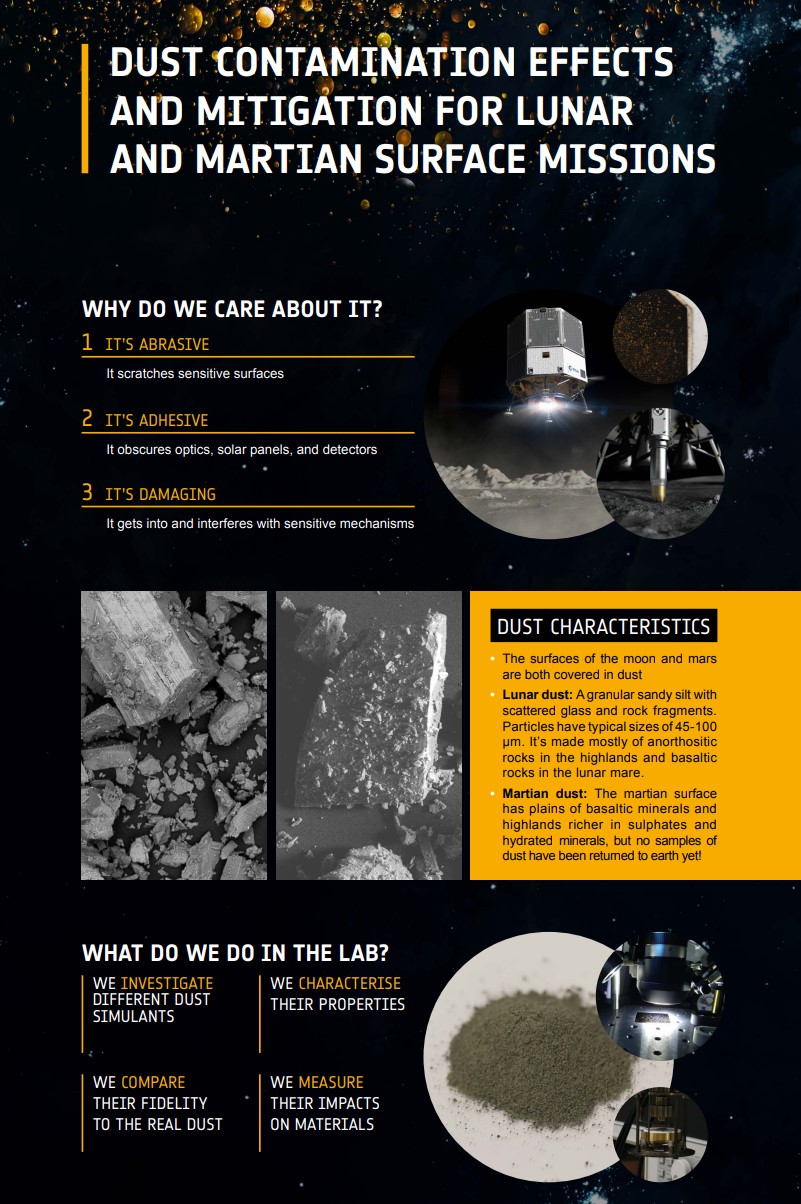Dust Contamination Effects & Mitigation for Lunar & Martian Surface Mission
As well as being a possible resource, dust poses a huge risk to missions. It is one of the most important issues we need to resolve to be able to carry out long-term exploration of the Moon and Mars.
“I think dust is probably one of our greatest inhibitors to a nominal operation on the moon. I think that we can overcome other physiological or physical or mechanical problems except dust” Apollo 17 Mission Commander, Eugene Cernan.

Almost all of the lunar surface is covered by a layer of regolith of varying thickness (usually a few meters). The regolith consists of particles predominantly below 1 cm in size, the majority of which is very fine-grained, under 100 μm.
Without the impact of terrestrial erosion mechanisms, the grains stay very sharp and highly abrasive. The low electric conductivity of the dust enables it to be charged by the impinging UV light - causing it to stick electrostatically to other surfaces. The stickiness of the material can have a huge impact on missions; obscuring thermal surfaces and covering instruments. Martian dust also has similar unique properties, and on Mars there are even winds to transport it readily around the surface.
Lunar and Martian regoliths are already very different from terrestrial surface materials and depending on the location on the surface there also exist large variations between regolith compositions. To prepare for the conditions faced by future missions, we need to be able to simulate these conditions on Earth, which definitely includes simulating the planetary dust that will be encountered!
Today various regolith simulants exist, but no one Earth-based material can match all properties of lunar or Martian regolith. In TEC-QEE, the Materials’ Physics and Chemistry section, we are characterising selected simulants to see how well they replicate the different properties of real regolith, and which simulant is best used for which test. We are working on developing standardised tests to compare properties for different simulants which may previously have been analysed by different experimenters, making it difficult to compare data. We are also testing some of the impacts of dust on relevant materials. The next step is to carry out more complex tests using relevant conditions, and we have plans underway to build a specialised Planetary Dust Simulation Facility to measure charging effects and changes in thermo-optical properties.

